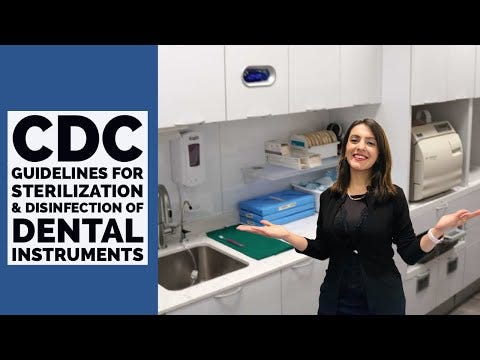CDC Guidelines for Sterilization and Disinfection of Dental Instruments Information
CDC Guidelines for Sterilization and Disinfection of Dental Instruments
Sterilization in dental offices is a critical part of infection control and patient safety. Following the CDC dental sterilization guidelines, every dental practice must ensure that dental instruments and equipment are thoroughly sterilized between uses. The process of sterilization of dental instruments involves removing all microbial life, including bacteria, viruses, and spores, to prevent cross-contamination and disease transmission.
The dental sterilization protocol begins with cleaning tools to remove debris, followed by heat-based methods like autoclaving. The dental tool sterilization process varies depending on the classification of instruments: critical, semi-critical, or non-critical. Critical instruments such as forceps and surgical tools must undergo complete sterilization. Semi-critical tools like mirrors and impression trays require high-level disinfection or sterilization. Even sterilization of the dental unit itself, including handpieces and delivery systems, is essential to maintain a safe environment for patients and staff.
Proper dental equipment sterilization also requires consistent monitoring through mechanical, chemical, and biological indicators to verify the effectiveness of each sterilization cycle. Dental staff should follow precise steps for loading sterilizers, use manufacturer-recommended procedures, and wear appropriate personal protective equipment. In addition to sterilizing instruments, disinfection of surfaces and surrounding areas of the dental unit should be done using EPA-approved hospital disinfectants.
Establishing a reliable sterilization dental unit process is crucial for maintaining high standards in every clinic. Regular training, accurate documentation, and adherence to CDC dental sterilization guidelines are necessary for compliance and quality assurance. By following these best practices, dental professionals create a safe clinical environment and demonstrate their commitment to excellence in patient care and infection prevention.
At our dental clinic, we follow strict CDC guidelines to ensure the proper sterilization and disinfection of all dental instruments and tools. Each unit and piece of equipment goes through a thorough process using approved protocols to maintain a safe and hygienic office environment. We also use high-quality sterilization pouches to keep instruments sealed and contamination-free until use.
Why do you think Sterilization and Disinfection of dental instruments is important in your dental office ?
Sterilization and Disinfection is the process carried out to reduce risks of transfer of infection ,elimination of bacterial, viral and fungal reservoirs and establishing discipline for asepsis.
Vigorous safeguards, exact technique and controlled professional standards are required to protect the health and welfare of persons receiving treatment as well as the dentist and the dental staff.
Every staff of your dental office should be well aware about the complete protocol of sterilization and disinfection.
✅This video explains 4 steps of sterilization-
1) Cleaning of the dental instruments
2) Sterilization
3)Packaging
4) Storage
Your patient’s safety is important! Ensure that you manage and maintain your dental equipment and your practice is OSHA compliant so you can protect your patients while operating at maximum efficiency
For more assistance contact your local Hayes Hand piece representative for OSHA, HIPAA and CDC Program.




